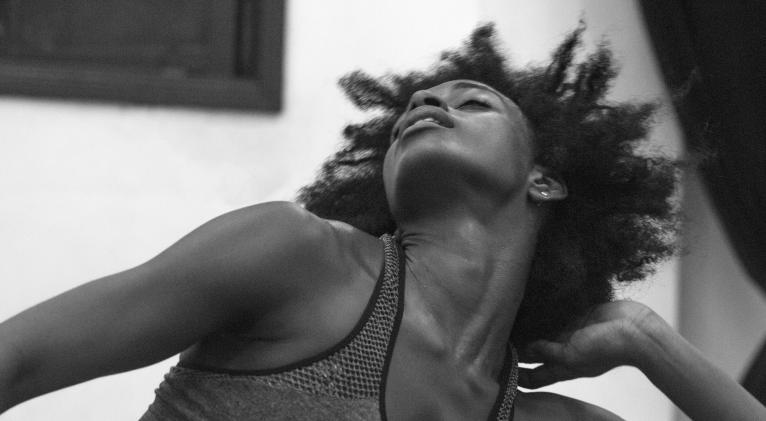Liliet Orozco: "I Want to Create in Cuba"
especiales

On March 15, Martí Theater, in the Cuban capital, will host the premiere of Balneario, a choreography by Iran Dilo for the Rosario Cárdenas company.
But in reality it’s more: it’s the debut of a cast of young dancers from different backgrounds and training who come together around an artistic project by the dancer and teacher Liliet Orozco, who until very recently was the leading figure in Contemporary Dance of Cuba.
Liliet is one of the performers of the piece, and at the same time she was in charge of the script and production of the show.
With Balneario begins a creative stage for a restless and committed artist. We interviewed her exclusively.
—How is this presentation created?
—The idea of this piece comes from reflections and experiences marked by social, racial prejudices and stereotypes that go through a socialization that sometimes puts us in doubt and makes us take unwanted paths.
We start from the need to grow and present a new criterion in the body-space-intimacy relationship.
With Balneario the aim is to explore some questions: What happens when spaces collide or oppose each other? How many prejudices, fears and uncertainties live in that deep and little explored area of our identity? How does the views of others condition us and how does it construct and affect our behavior?
They are those questions born on stage, which have conditioned our gestures, to release the tensions, the restrained vapors of an anthropological fear of nudity, of being alone and accompanied, of sharing our zone of intimacy with the other, to create from the dance a space of freedom.
—What challenges did it pose for you?
—The process of the work has been a challenge for me and Iran Dilo, who has developed the entire choreographic creation, since it’s the first experience we have developing a work this huge.
He from his perspective as a choreographer and me as a scriptwriter, general producer and as a dancer, simultaneously.
This challenge has also been accompanied by learning and I must thank Rosario Cárdenas, who has given us this great opportunity to develop this piece and has opened the doors of knowledge and experience about it.
—What are the characteristics of this project? What has it been like to work with dancers from different backgrounds?
—This project is based on the conception of thinking about creativity as an action of innovation, that there are relational acts (inter and extra artistic), in the indivisibility of art and that autonomous artistic subsystems will always be externalized; but, at the same time, framed in an open system.
Its root is located in the recognition of a solidity in the inner creativity of the Cuban construct, where all branches of the rest of dance specialties will meet in the contemporary genre: folklore in its entirety, neoclassical, and modern.
This diversification will not only be implicit in the dancing side, but also in the dancers. Hence the reason for working with dancers from different backgrounds, that sometimes synchronization is difficult but each one makes important contributions.
—Some say that young people just want to leave Cuba, that they don't find opportunity for fulfillment here... Why are you betting on Cuba?
—Certainly, these are rough times; but I decided to be here because I’m interested in defending my idiosyncrasy, which is closely linked to the culture of the nation. I think sometimes we don't value our great heritage. And we’re not even aware of everything we can do, because we tend to underestimate ourselves.
We are young, and we are full of energy. Of course we lack experience, but if they give us the chance to acquire it here, we’ll take advantage of it. In the end it’s about continuing the work of our teachers. Someone has to do it. Many have the talent to do it.
For me it’s very important to create something strong, from a cultural point of view. I feel like I owe it to my trainers.
It's an emotional issue. Nobody said it was easy. But I’m willing to fight for that. And I want it to be here, in the place where I was born and trained.
Translated by Amilkal Labañino / CubaSí Translation Staff














Add new comment